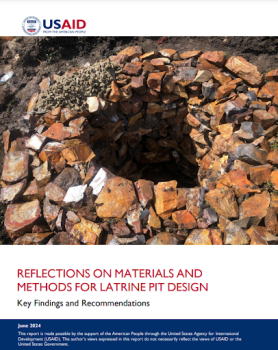Pit latrines, a common form of on-site sanitation in low-income settings, can collapse in areas with unstable soils, in flood-prone areas, or when they contain excess moisture. Pit collapse poses not only a safety concern for users, but also results in a sunk cost to consumers. Collapsed pits may ultimately lead households to abandon their pit latrines and revert to open defecation. Pit lining can provide structural support to prevent collapse and ensure longevity and ultimate sustainability, but existing pit lining options are often unaffordable and face challenges with marketability; published examples of alternatives are sparse. Despite a growing focus on product design and market development for latrine products such as slabs and superstructures, innovation around affordable, effective, and marketable pit lining materials and methods has been limited. At the request of the United States Agency for International Development (USAID), the Water, Sanitation, and Hygiene Partnerships and Learning for Sustainability (WASHPaLS) #2 Activity conducted a two-phase study to examine existing options and potential innovations for pit lining (Phase 1), and propose an approach to sourcing, developing, testing, and examining select marketable innovations to improve pit lining options (Phase 2). This report highlights findings and recommendations from Phase 1.


